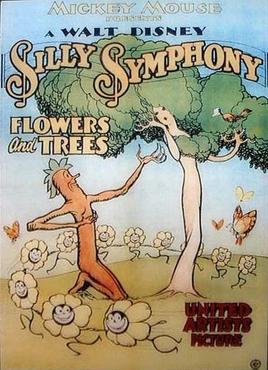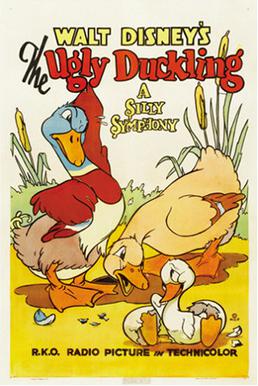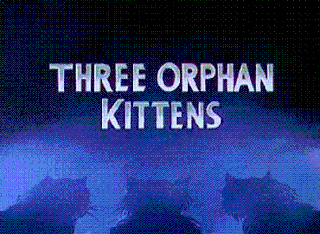Related Research Articles
Silly Symphony is an American animated series of 75 musical short films produced by Walt Disney Productions from 1929 to 1939. As the series name implies, the Silly Symphonies were originally intended as whimsical accompaniments to pieces of music. As such, the films usually did not feature continuing characters, unlike the Mickey Mouse shorts produced by Disney at the same time. The series is notable for its innovation with Technicolor and the multiplane motion picture camera, as well as its introduction of the character Donald Duck, who made his first appearance in the Silly Symphony cartoon The Wise Little Hen in 1934. Seven shorts won the Academy Award for Best Animated Short Film.

Flowers and Trees is a Silly Symphonies cartoon produced by Walt Disney, directed by Burt Gillett, and released to theatres by United Artists on July 30, 1932. It was the first commercially released film to be produced in the full-color three-strip Technicolor process after several years of two-color Technicolor films. The film was a commercial and critical success, winning the first Academy Award for Best Cartoon Short Subject.

Burton F. Gillett was a director of animated films. He is noted for his Silly Symphonies work for Disney, particularly the 1932 short film Flowers and Trees and the 1933 short film Three Little Pigs, both of which were awarded the Academy Award for Best Animated Short Film and both of which were selected for inclusion in the National Film Registry.

The Skeleton Dance is a 1929 Silly Symphony animated short subject with a comedy horror theme. It was produced and directed by Walt Disney and animated by Ub Iwerks. In the film, four human skeletons dance and make music around a spooky graveyard—a modern film example of medieval European "danse macabre" imagery. It is the first entry in the Silly Symphony series. In 1993, to coincide with the opening of Mickey's Toontown in Disneyland, a shortened cover of the cartoon's music was arranged to be featured in the land's background ambiance. The short's copyright was renewed in 1957, and as a published work from 1929, it entered the US public domain on January 1, 2025.
Summer is a Walt Disney short film released on January 16, 1930. Directed by Ub Iwerks, it is the sequel to the short Springtime (1929). It is 6 minutes long.

The Ugly Duckling is an animated short film by Walt Disney, based on the 1843 fairy tale "The Ugly Duckling" by Hans Christian Andersen. The film was directed by Jack Cutting and Clyde Geronimi, and released in theaters on April 7, 1939. Music was composed by Albert Hay Malotte, who was uncredited for the film. The animated short was first distributed by RKO Radio Pictures, and was shown with Love Affair.

Three Orphan Kittens is a 1935 animated short film in the Silly Symphonies series produced by Walt Disney Productions. It was the winner of the 1935 Oscar for Academy Award for Best Short Subject (Cartoons). It was followed in 1936 by a sequel, More Kittens.
Midnight in a Toy Shop is an American 1930 Silly Symphonies animated short film directed by Wilfred Jackson and produced by Walt Disney Productions.

Three Blind Mouseketeers is a Silly Symphonies cartoon based on the nursery rhyme Three Blind Mice and the 1844 novel The Three Musketeers by Alexandre Dumas. Directed by Dave Hand and Jack Cutting, it stars Billy Bletcher.
The Spider and the Fly is a 1931 Silly Symphonies cartoon.
The Flying Mouse is a Silly Symphonies cartoon produced by Walt Disney, directed by David Hand, and released to theatres by United Artists on July 14, 1934. The use of color here was rather innovative as it is set during the course of a single day.
Mother Goose Melodies is a 1931 Silly Symphonies animated film, directed by Burt Gillett. Two years later it was semi remade in Technicolor as Old King Cole.

Springtime is a Silly Symphonies animated Disney short film. It was released in 1929. It was the third Silly Symphonies film to be produced, just five days before the 1929 Stock Market Crash. The short entered the US public domain on January 1, 2025.
The Busy Beavers is a 1931 Silly Symphonies animated film, directed by Burt Gillett.

The Merry Dwarfs is a Silly Symphonies animated Disney short film. It was released in 1929. The short's copyright was renewed in 1957, and as a published work from 1929 it entered the US public domain on January 1, 2025.
Cannibal Capers is a Silly Symphonies animated Disney short film. It was released on March 13, 1930.
Arctic Antics is a Silly Symphonies animated Disney short film. It was released on June 26, 1930.
Monkey Melodies is a Silly Symphonies animated Disney short film. It was released in 1930 as the 13th film in the Silly Symphony Series.
Playful Pan is a Silly Symphonies animated Disney short film. It was released on December 27, 1930, by Columbia Pictures.
The Bird Store is a Silly Symphonies animated Disney short film. It was released on January 16, 1932, by Columbia Pictures. The cartoon marks the first recorded voice work of Clarence Nash for Walt Disney Productions, and was also the final cartoon in the Silly Symphonies series to be released by Columbia Pictures.
References
- 1 2 3 Merritt, Russell; Kaufman, J. B. (2016). Walt Disney's Silly Symphonies: A Companion to the Classic Cartoon Series (2nd ed.). Glendale, CA: Disney Editions. pp. 94–95. ISBN 978-1-4847-5132-9.
- ↑ "Shorts". Motion Picture Herald : 34. October 3, 1931. Retrieved February 23, 2020.
- ↑ "Talking Shorts". Variety : 19. October 27, 1931. Retrieved February 23, 2020.